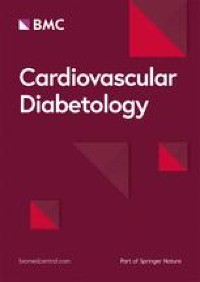Cardiovascular
Timing of SGLT2i initiation after acute myocardial infarction
Very early administration of SGLTi Empagliflozin after AMI does not show disadvantageous signals with respect to safety and appears to be as effective in reducing NT-proBNP as well as improving structural and functional LV markers as initiation after 2–3 days.
Mechanisms underlying the beneficial effects of SGLT2i in cardiovascular disease are widely discussed and obviously multifactorial [8]. The findings, however, seem to depend on the models used and only limited data are available from human tissue and trials. Emerging evidence indicates the beneficial effects of SGLT2i therapy in patients with severe coronary artery disease [9] and ACS [10, 11]. A study in diabetic patients with non-obstructive multivessel disease depicted a large reduction of a composite endpoint indicating cardiovascular disease events, hospital admissions for heart failure, and ischemic cardiovascular events accompanied by significantly lower inflammation parameters in the SGLT2i treated group after 1 year. All patients had invasive imaging at baseline and after 12 months. The SGLT2i treated group was characterized by a thicker minimum width of the fibrous cap and a smaller lipid arch representing more stable plaque [9]. With respect to myocardial infarction patients with diabetes, a reduced incidence of in-stent restenosis-related events was shown using the data of a prospective registry. This effect was independent of glycemic control [10]. Confirmative data derived from an international registry of MI patients with diabetes reported significantly lower in-hospital cardiovascular deaths, arrhythmic burden, and acute kidney disease in patients who are hospitalized and further treated with SGLT2i after MI [11].
As shown in the EMMY trial cohort, AMI results in increased inflammation over time but this trajectory is not impacted by empagliflozin treatment [12]. In addition, Trimethylamine N-oxide (TMAO) considered to be involved in pro-atherogenic pathways has been shown to rapidly increase after MI and maintain elevated levels throughout the 26-week observation period with even higher levels in the Empagliflozin group [13].
Although not significantly different from other treatment initiation times, the median baseline NT-proBNP level was the highest in patients randomized at 24 to 48 h after PCI. This observation represents rather the trajectory of NT-proBNP levels after MI than differences in infarct size or severity [14, 15].
The results of two large outcome trials, DAPA-MI and EMPACT-MI [16], for SGLT2i treatment after MI will soon be available and will expand on the evidence of this new therapy concept. However, the SGLT2i treatment initiation happens significantly later in these trials (within 14 days for Empagliflozin and within 10 days after MI for Dapagliflozin). Thus, only limited data will be provided by these trials with respect to the very early phase. Likewise, the EMPULSE trial for Empagliflozin in patients with acute heart failure [17] initiated treatment > 24 h after hospitalization.
This is in line with only limited data on very early initiation post-MI for established therapies such as beta blockers and RAAS inhibitors. A recent meta-analysis indicates a preference for ARNIs compared to ACEI/ARBs but recommends initiation within 24 h after MI for the latter group [18]. Of note, almost all data for very early administration derived from STEMI patients with reduced baseline ejection fraction. In EMMY, predominantly STEMI patients were included (86%), but baseline LV-EF was only slightly reduced (average 48.2 ± 8.2%).
As shown in numerous previous cardiovascular trials, SGLT2i are equally effective in patients with or without diabetes. Safety concerns of this drug class in severely ill or hospitalized patients were addressed by current diabetes guidelines, [6] but also recently challenged based on accumulating data indicating an overall low risk of ketoacidosis, particularly in those people without diabetes, in contrast to robust positive cardiovascular effects [19].
This is supported by the data from the EMPULSE trial [17] with a median treatment initiation on the third day of hospitalization for acute heart failure and thus far providing the best evidence on the early administration of SGLT2i in severely ill cardiovascular patients. Empagliflozin treatment resulted in a higher clinical benefit than placebo with respect to efficacy parameters integrated in a win-ratio and no safety issues were reported. Our analysis extends this finding and suggests safety and efficacy to an immediate SGLT2 inhibitor initiation in people with MI.

